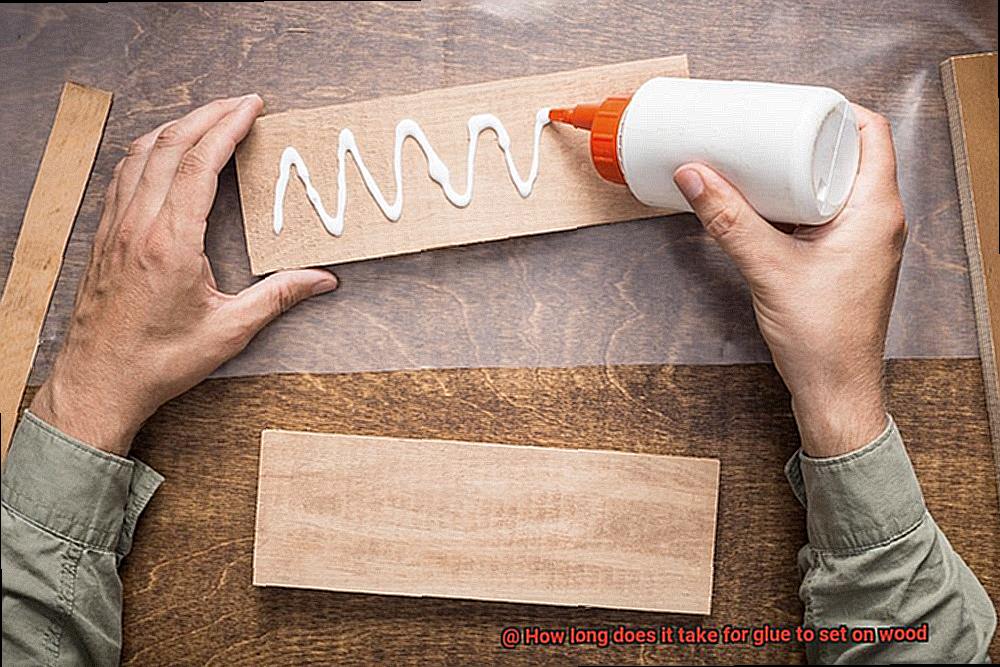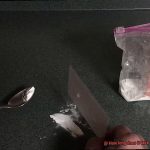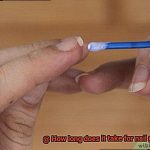Are you a woodworking enthusiast who loves crafting beautiful pieces with your own hands? If so, you know that glue is the binding force that brings every project together. But have you ever wondered how long it takes for glue to set on wood? It’s a question that every woodworker asks, and the answer can vary depending on various factors.
In this blog post, we’ll delve into the world of woodworking glue and explore the different types commonly used, such as PVA, epoxy, and polyurethane. We’ll also discuss estimated drying times for each type of glue and what affects the setting time. From temperature to humidity levels in your workspace, we’ll cover everything you need to know.
Whether you’re new to woodworking or a seasoned pro, understanding how long it takes for glue to set on wood is crucial knowledge that will help take your craft to the next level. So grab a cup of coffee and join us as we explore this fascinating topic together.
What is Wood Glue?
Contents
- 1 What is Wood Glue?
- 2 The Types of Wood Glue
- 3 How Long Does it Take for Glue to Set on Wood?
- 4 Factors that Affect the Setting Time of Glue
- 5 Temperature and Humidity Considerations
- 6 Air Circulation Considerations
- 7 Different Types of Woods and Their Bonding Properties
- 8 Preparing the Surfaces Before Applying Glue
- 9 Conclusion
Wood glue is a must-have adhesive for anyone looking to create permanent bonds between pieces of wood. It is specifically formulated to be strong and versatile, making it the go-to choice for woodworking projects. There are various types of wood glue available, each with unique properties and curing times.
The most commonly used wood glue is PVA glue, also known as white glue or carpenter’s glue. This water-based adhesive is easy to clean up while still wet and sets quickly in just 30 minutes. However, it takes up to 24 hours to reach its maximum strength. PVA glue is perfect for everyday woodworking projects and creates a strong hold that can withstand moderate stress.
Polyurethane glue is another popular type of wood glue that can withstand moisture and temperature changes. It can even be used on materials like metal and plastic. However, this type of glue takes longer to set than PVA glue, usually between 4-12 hours, and can be difficult to remove if it dries on surfaces.
Epoxy glue is a two-part adhesive that requires mixing before use. It creates an incredibly strong bond that can withstand heavy loads and extreme temperatures. Although it sets within 5-10 minutes, it takes up to 24 hours to cure completely. This type of glue is ideal for heavy-duty woodworking projects that require a high level of strength.
Hide glue is an animal-based adhesive made from collagen found in animal hides and bones. It was commonly used in woodworking before modern synthetic glues were developed. Hide glue requires heating before use to melt it into a liquid form, and it sets quickly within 10-15 minutes but takes several hours to cure. This type of glue is perfect for antique restoration projects.
When selecting the right type of wood glue for your project, consider factors like the materials you’re working with and the required strength of the bond you need. Environmental factors such as temperature and humidity can also impact how long it takes for glue to set and cure. By taking these factors into account, you can ensure that your glued joints will remain strong and durable over time.
The Types of Wood Glue
Wood glue is an integral part of woodworking, providing a strong and lasting bond between pieces of wood. However, not all wood glues are created equal, and understanding the different types available can make a significant difference in your woodworking projects. Let’s take a closer look at the various types of wood glue and their specific uses.
PVA Glue
If you’re a beginner or working on a general woodworking project, PVA glue is a reliable choice. This water-based adhesive is easy to use, dries clear, and has a strong bond. It’s perfect for household use and general woodworking projects where high strength isn’t necessary.
Epoxy
When it comes to outdoor projects or anything that requires extra strength, epoxy is the way to go. This two-part adhesive creates an incredibly strong bond that can withstand water and heat. Although it takes longer to set than PVA glue, the extra time is worth it for its exceptional holding power.
Hide Glue
For antique restoration projects, hide glue is an excellent option. Made from animal hides and hooves, this natural adhesive has been around for centuries. With its long open time, it allows you to make adjustments before it fully sets while also being reversible.
Cyanoacrylate
For quick repairs or bonding small pieces together, cyanoacrylate (super glue) is an excellent choice. This fast-drying adhesive creates an instant bond between surfaces but may be brittle over time, making it unsuitable for larger woodworking projects.
Polyurethane
Polyurethane glue is perfect for filling gaps and voids in wood due to its expanding properties as it dries. It creates a robust bond that can be sanded or stained once dry. Although it takes longer to set than other wood glues, its versatility makes it ideal for various woodworking projects.
How Long Does it Take for Glue to Set on Wood?

Firstly, it’s important to know that there are various types of glue available for wood projects. PVA glue is the most commonly used type, and it dries within 30 minutes to an hour. However, if you’re looking for a stronger bond for outdoor projects, epoxy glue is the way to go. Although it takes around 24 hours to dry, it’s incredibly durable and can withstand harsh weather conditions. Other options include cyanoacrylate glue (super glue) and polyurethane glue, each with their unique properties and drying times.

But what about the environmental factors that affect drying times? Temperature and humidity levels play a significant role here. Higher temperatures and humidity levels speed up the drying process, while cooler temperatures and lower humidity levels slow it down. It’s essential to consider these factors when working with glue, especially if you’re in a region with varying weather conditions.
Lastly, don’t be fooled by the appearance of dryness on the surface of your glued project. It may take up to 24 hours for the glue to fully cure, depending on the type of glue and environmental factors. To ensure that your project lasts, wait at least 24 hours before applying any pressure or stress on the glued area.
Factors that Affect the Setting Time of Glue
The setting time of glue on wood is a critical factor that can make or break your project’s success. As an expert in this field, let me guide you through the essential factors that affect the setting time of glue.
Firstly, the type of adhesive used plays a significant role in determining how long it takes for glue to set on wood. Each adhesive has its unique setting time, with some taking longer to dry than others. For instance, PVA glue typically sets faster than epoxy glue. Therefore, it’s crucial to choose the right type of adhesive for your project and be aware of its drying time.
Secondly, temperature and humidity levels can significantly affect the setting time of glue. The higher the temperature, the faster the drying time, while lower temperatures can slow down the process. Similarly, higher humidity levels can slow down the drying times since moisture affects the glue’s ability to dry.
Thirdly, applying sufficient pressure during clamping is crucial to ensure a strong bond without compromising the drying time. Applying too little pressure can result in gaps in the joint, while too much pressure can squeeze out excess glue, weakening the bond. Therefore, make sure you apply enough pressure to achieve a strong bond that dries within a reasonable amount of time.
Lastly, the porosity of the wood is also an essential factor that affects how quickly glue sets. More porous woods like pine or cedar tend to absorb more glue, which can slow down the drying process. Hardwoods like oak or maple are less porous and may require less glue and therefore less drying time.
Temperature and Humidity Considerations
Then you need to pay attention to a critical factor: temperature and humidity considerations.
It’s no secret that the glue you use is just as important as the wood you’re working with. But did you know that the temperature and humidity levels in your workspace can significantly affect the setting time of glue on wood? Let me guide you through this crucial element in achieving a successful bond.
Temperature is king when it comes to determining how fast your glue will set. In general, warmer temperatures lead to faster setting times. However, be cautious about cranking up the heat too high, or you might find that your glue dries out before it has a chance to bond properly. For example, PVA glues set faster when used in temperatures ranging from 18°C to 25°C (65°F to 77°F) than when used in colder temperatures.
But that’s not all – humidity levels can also impact the setting time of your glue. Low humidity can cause your glue to dry too quickly, resulting in weak bonding. Conversely, high humidity can extend the drying time of your glue and ultimately lead to frustration.
When using PVA glues, optimal humidity levels range from 50% to 55%. However, always check the manufacturer’s instructions for specific recommendations for the glue you’re using. Keep in mind that some brands and types of glues are formulated for use in different temperature and humidity conditions.
To sum up, here are some temperature and humidity considerations to keep in mind when using any type of glue on wood:
- Follow the manufacturer’s instructions carefully regarding optimal conditions for bonding
- Allow enough time for the glue to set correctly before handling or applying pressure on the joint
- Don’t forget about providing sufficient pressure during clamping
- Be aware of special formulas for specific temperature and humidity conditions
Air Circulation Considerations
Look no further than proper air circulation. As a glue expert, I can attest that air movement is a crucial factor in the setting process.
Inadequate air circulation can cause glue to dry slowly or unevenly, leading to weak bonds and potential failure. To prevent this, it’s essential to maintain optimal temperature and humidity levels. For most wood glues, a temperature range of 60-80°F and a humidity range of 40-60% are ideal. Low humidity can cause the glue to dry too quickly, while high humidity can slow down the process.
Furthermore, proper air movement in the workspace is crucial for even distribution of heat and humidity. Fans or ventilation systems can improve air circulation, preventing pockets of stagnant air that hinder the drying process. Don’t let poor ventilation compromise your glue job.

Another critical consideration is the positioning of wood pieces during gluing. Giving sufficient space between glued surfaces allows for proper air circulation and ensures the best result. Avoid placing heavy or large objects on top of freshly glued wood, as they can impede air circulation and lead to poor bonding.
Different Types of Woods and Their Bonding Properties
When it comes to bonding wood with glue, there are a few key factors to consider. The type of wood you’re working with is one of the most important, as different woods have varying properties that can affect how well they bond with glue.
Softwoods vs. Hardwoods
Softwoods like pine, fir, and cedar are more porous than hardwoods like oak and maple. This means that softwoods tend to absorb more glue and require longer drying times to achieve a strong bond. On the other hand, hardwoods require less glue and have shorter drying times.
Exotic Woods
Exotic woods like teak and rosewood can be more challenging to bond due to their natural oils and waxes. These oils can repel glue and prevent it from penetrating the wood fibers. To overcome this, it’s important to sand or clean the surface before applying glue to ensure a proper bond.
Moisture Content
The moisture content of the wood can also impact the bonding process. Wood that is too wet or too dry may not bond well with glue. A moisture content of around 6-8% is optimal for bonding with most types of glue.
Glue Types
There are different types of glue available for woodworking projects, each with their own strengths and weaknesses. Cyanoacrylate (CA) glue sets quickly but may not be suitable for hardwoods or oily woods like teak or rosewood. Polyurethane glue is known for its strength and versatility but can take several hours to fully cure. Epoxy glue is a strong and versatile option that works well on a variety of woods but typically takes around 24 hours to fully cure.
Surface Preparation
Before bonding with glue, it’s essential to ensure that the wood surfaces are clean and free of any debris or oils. This will help ensure a strong and lasting bond between the two pieces of wood.
Preparing the Surfaces Before Applying Glue
In the case of gluing wood together, it’s crucial to properly prepare the surfaces beforehand to ensure a strong and lasting bond that will stand up to wear and tear. So, let’s discuss the steps you need to take to prepare those wood surfaces.
To kick things off, cleanliness is key. Any dirt, dust, or debris on the surfaces can negatively impact the glue’s ability to adhere correctly. Therefore, using a soft cloth or brush to remove these particles is essential.
After cleaning, it’s time to sand the surfaces. Sanding creates a rough surface that improves the glue’s ability to bond effectively to the wood. However, it’s crucial not to leave behind any rough spots as this can affect the overall strength of the bond.
Once you’ve sanded the surfaces evenly, wipe them down with a clean cloth to remove any sawdust or debris left behind. It’s essential to ensure that the surfaces are entirely clean and free from any particles before applying glue.
Now it’s time to apply the glue. However, before jumping in, it’s crucial to follow the manufacturer’s instructions for your specific type of glue. Different types of glue have different drying times, which can range from 30 minutes up to 24 hours for full bonding strength.
U0hhFjjW5EU” >
Conclusion
To sum it up, having a solid understanding of how long glue takes to set on wood is vital for any woodworking enthusiast. With an array of glues available, each with unique properties and curing times, choosing the right one for your project is crucial. PVA glue, the most widely used type, sets quickly in just 30 minutes but requires up to 24 hours to reach its maximum strength. Polyurethane and epoxy glues are perfect for heavy-duty projects that demand high levels of strength but take longer to set.
Drying times can be significantly affected by temperature and humidity levels, with higher temperatures and humidity speeding up the process. Proper air circulation is also essential for even distribution of heat and humidity during the setting process.
Different types of woods possess varying properties that can impact how well they bond with glue. Hence, it’s crucial to consider factors like softwoods vs hardwoods, exotic woods, moisture content, and surface preparation before applying glue.
By following these guidelines and manufacturer instructions diligently, you can guarantee that your glued joints will remain strong and durable over time.






